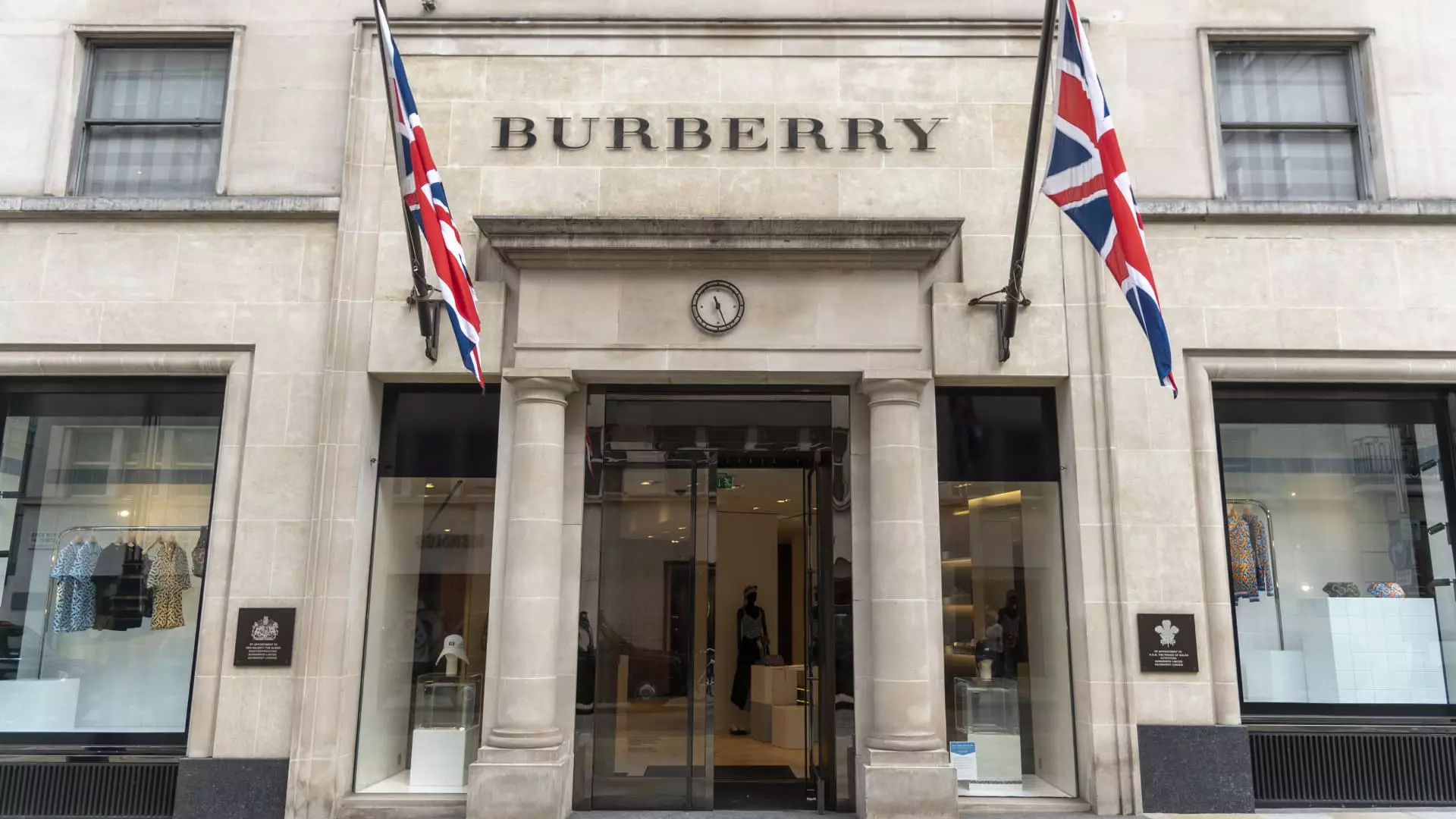The recent news of Burberry Group dropping out of the U.K.’s FTSE 100 stock market index comes as a significant blow to the iconic luxury fashion house. This move reflects the culmination of various challenges that the company has been facing, including waning sales, management changes, and a general decline in consumer interest in the brand. With a 15-year run in the FTSE 100 index coming to an end, Burberry is now grappling with a diminished market cap and a significant decrease in its share price. The company’s struggles are not limited to recent times, as it has been attempting to reinvent its image and regain its foothold in the luxury market for quite some time.
Burberry’s decline can be attributed to a combination of factors that have impacted its brand perception and financial performance. The brand’s association with its iconic check print, once a symbol of high-end luxury, has been diluted over the years due to its adoption by the British working class. This shift in consumer perception has had a lasting impact on Burberry’s ability to position itself as a premium brand in the market. Additionally, the company’s frequent changes in top leadership have led to investor uncertainty and raised questions about the brand’s strategic direction. The recent appointment of Joshua Schulman as CEO signals a potential shift in Burberry’s approach, with a focus on cost reduction and increased presence in off-price retail channels.
As Burberry grapples with its relegation from the FTSE 100 index and struggles to revive its fortunes, analysts are divided on the company’s future prospects. While some suggest that the brand’s deteriorating market share could make it an attractive takeover target, others believe that a successful turnaround under new leadership could negate this possibility. Schulman’s upcoming strategy update in November will be closely watched to gauge the direction in which he plans to take Burberry. The potential overhaul of the company’s board, including the replacement of its chairman, Gerry Murphy, is indicative of the broader changes that may be on the horizon for Burberry.
Industry Trends and Competition
Burberry is not alone in facing challenges within the luxury sector, as other brands have also reported declines in sales and revenue. The overall downturn in consumer spending, particularly in markets like China, has put pressure on luxury retailers to adapt to changing economic conditions. While some players have managed to weather the storm and even report strong sales, others, like Burberry, have struggled to stay afloat. The cyclical nature of the luxury market underscores the importance of proactive measures to address underlying issues and capitalize on emerging opportunities for growth.
Burberry Group’s exit from the U.K.’s FTSE 100 index serves as a stark reminder of the challenges facing traditional luxury brands in today’s competitive market. The company’s efforts to realign its brand image, streamline its operations, and regain investor confidence will be critical in determining its future success. With the appointment of a new CEO and potential changes at the board level, Burberry is at a crossroads where decisive action is needed to navigate the evolving landscape of the luxury fashion industry. As the company prepares to unveil its half-year financial results in November, stakeholders will be watching closely to see if Burberry can stage a comeback and reclaim its position as a leading player in the global luxury market.

